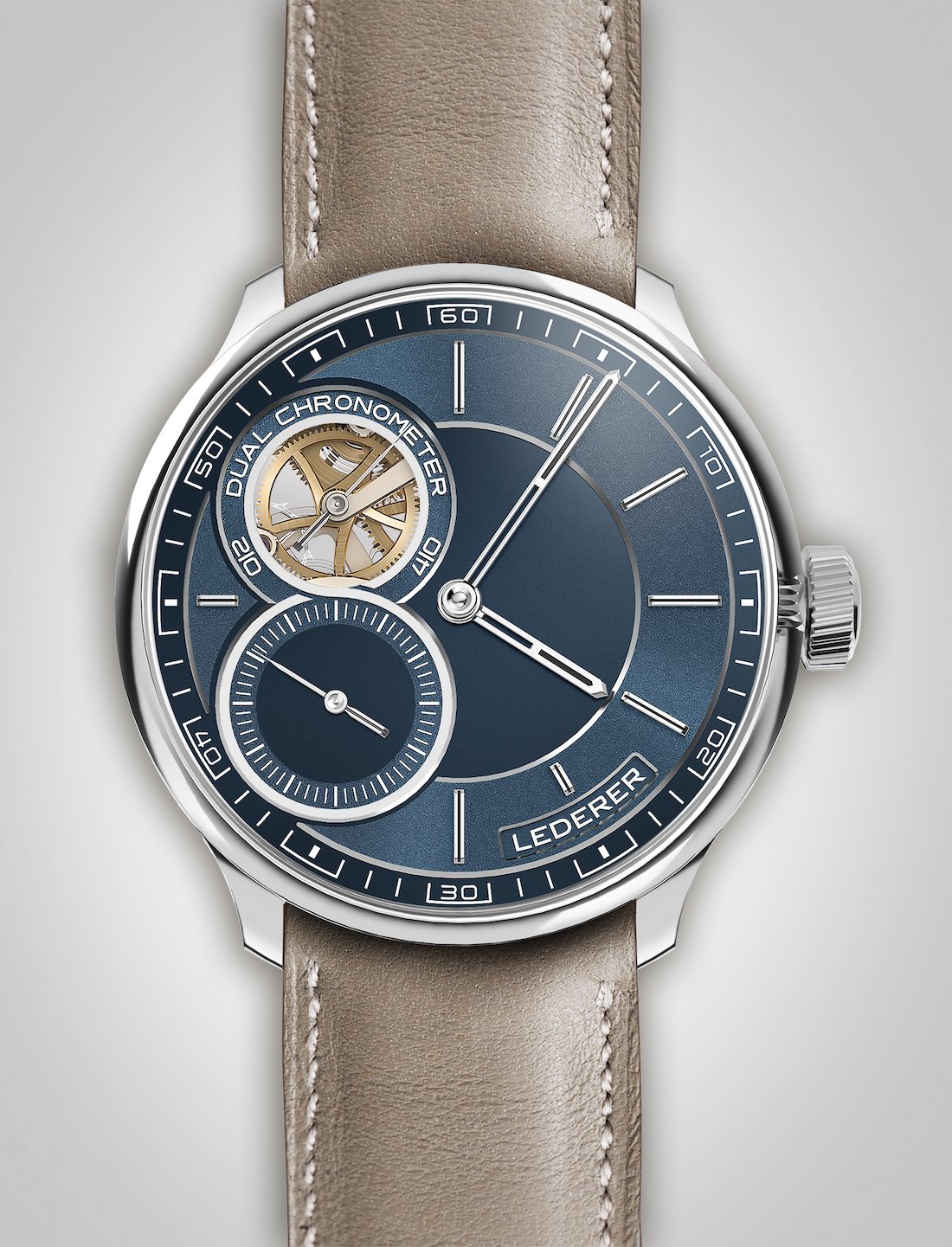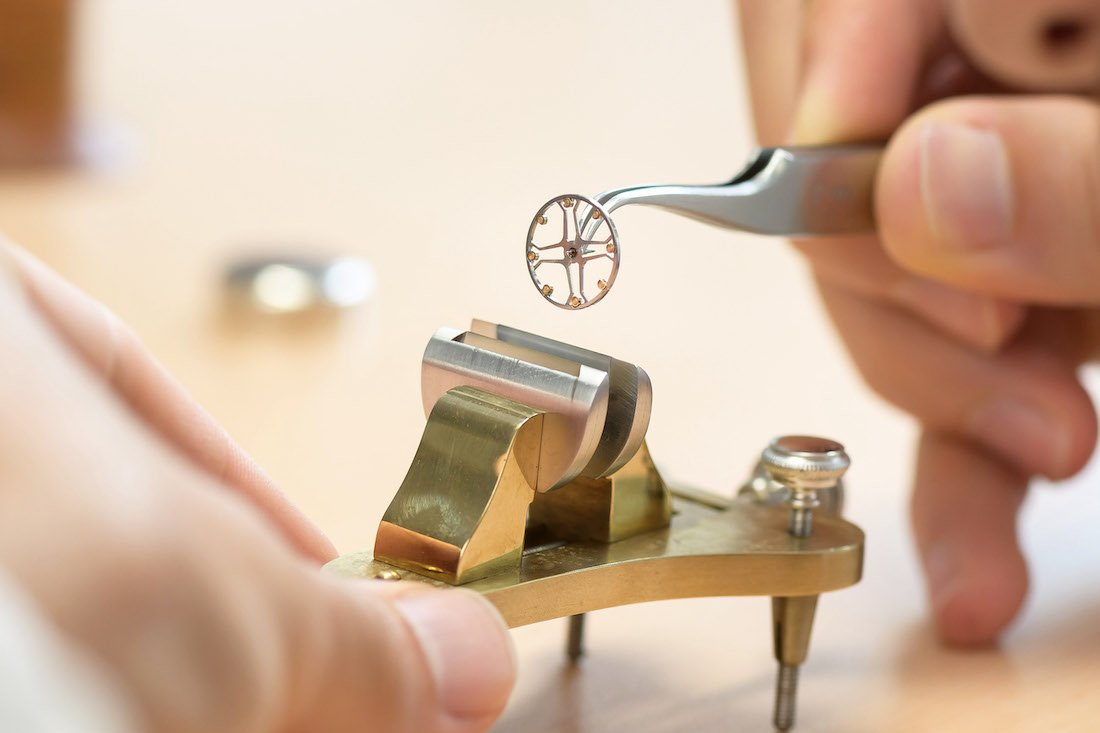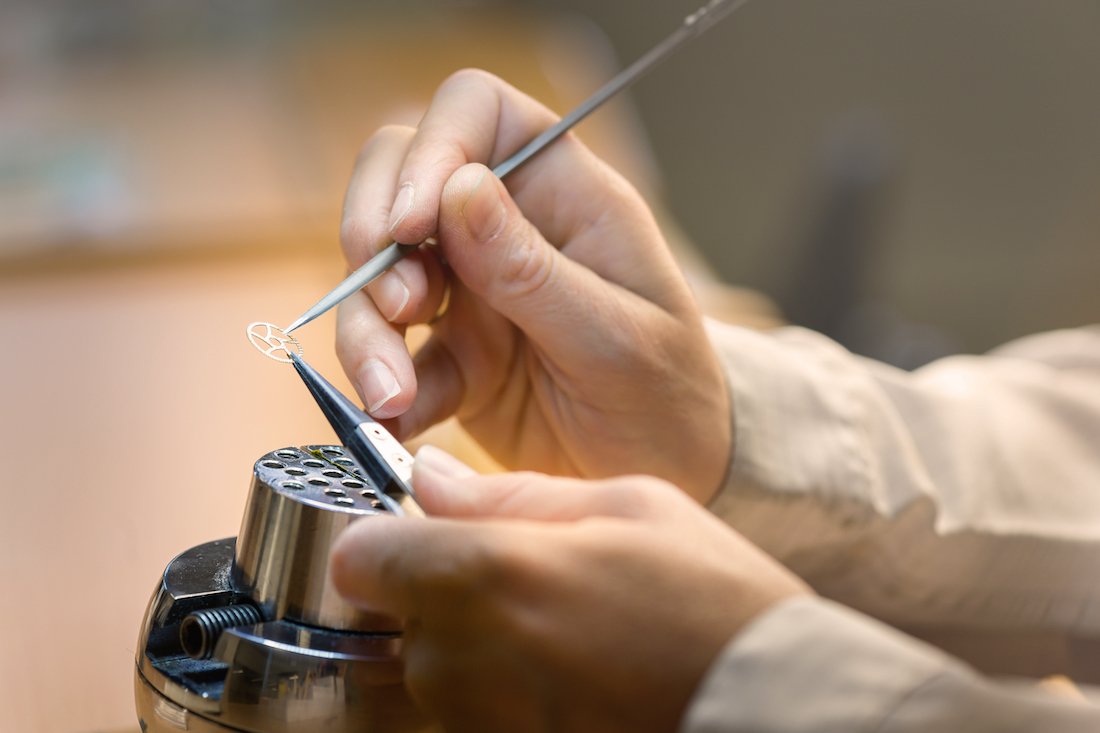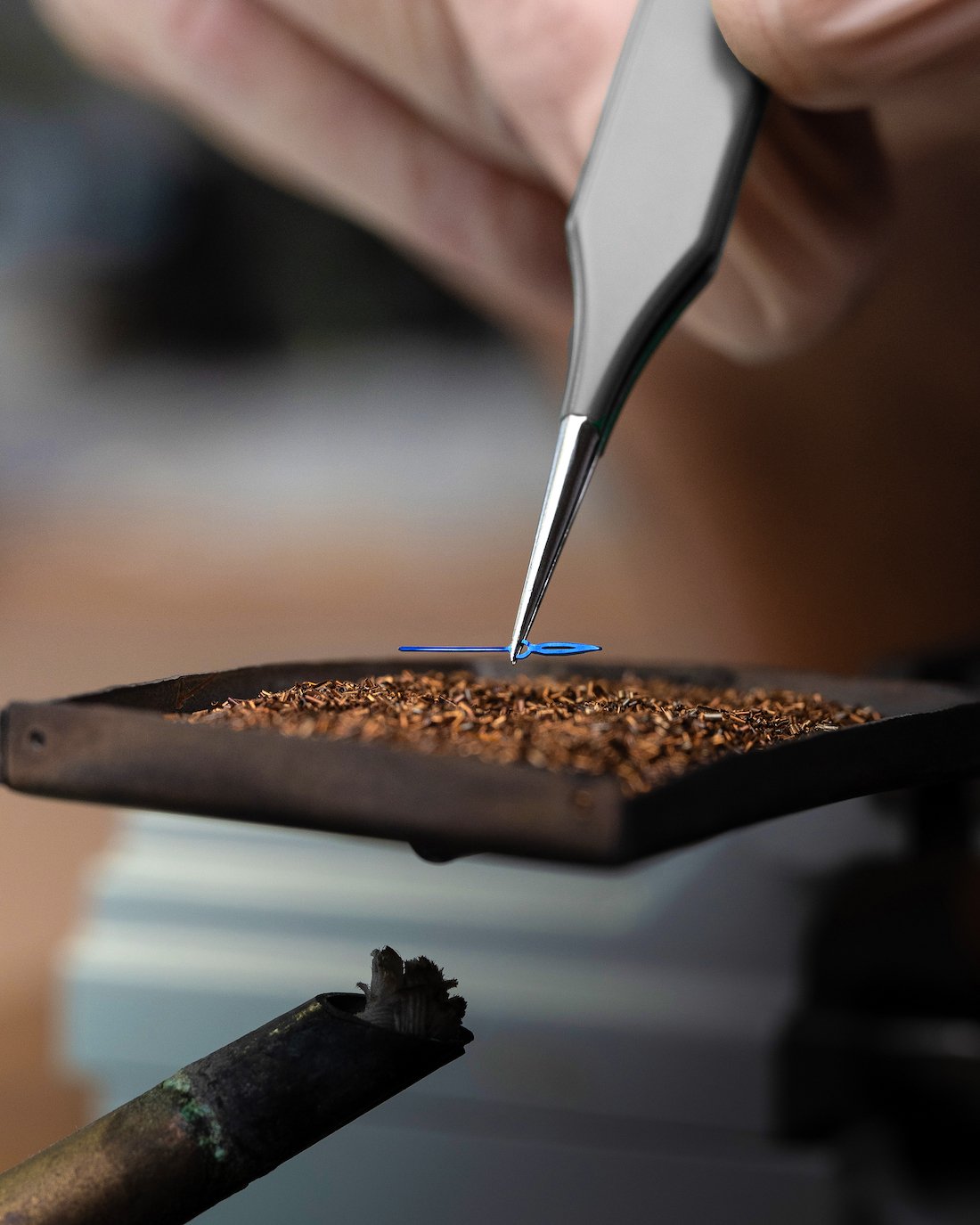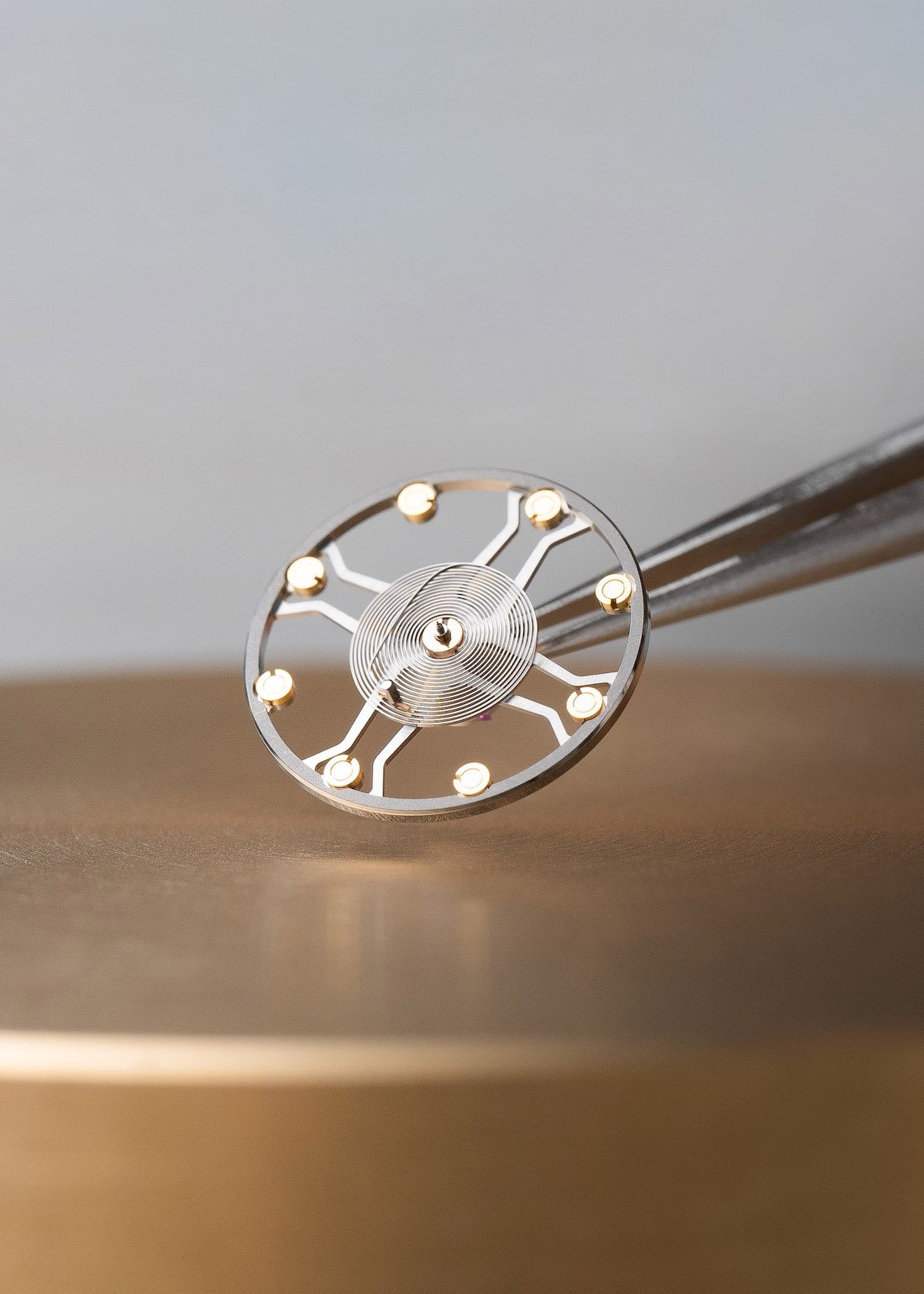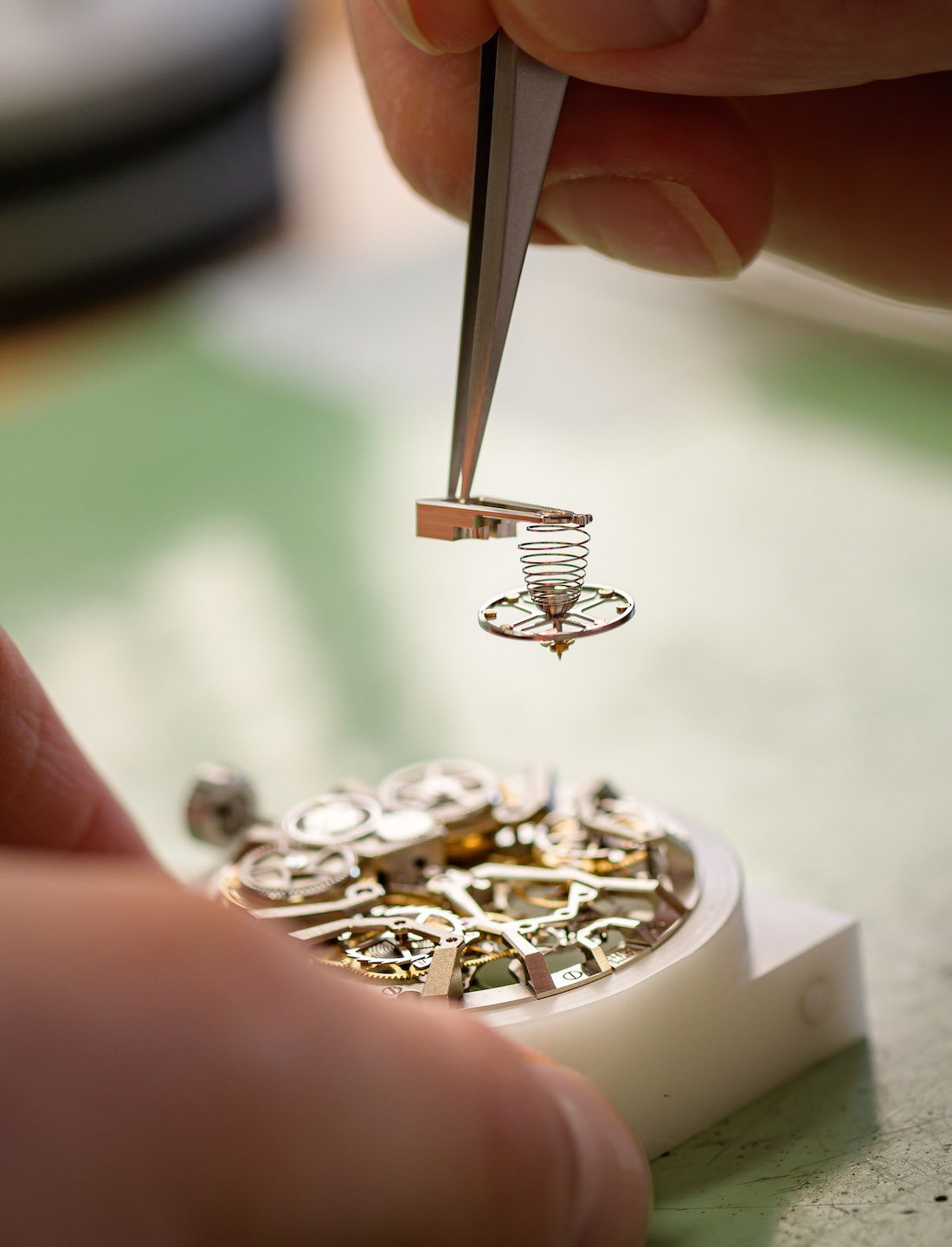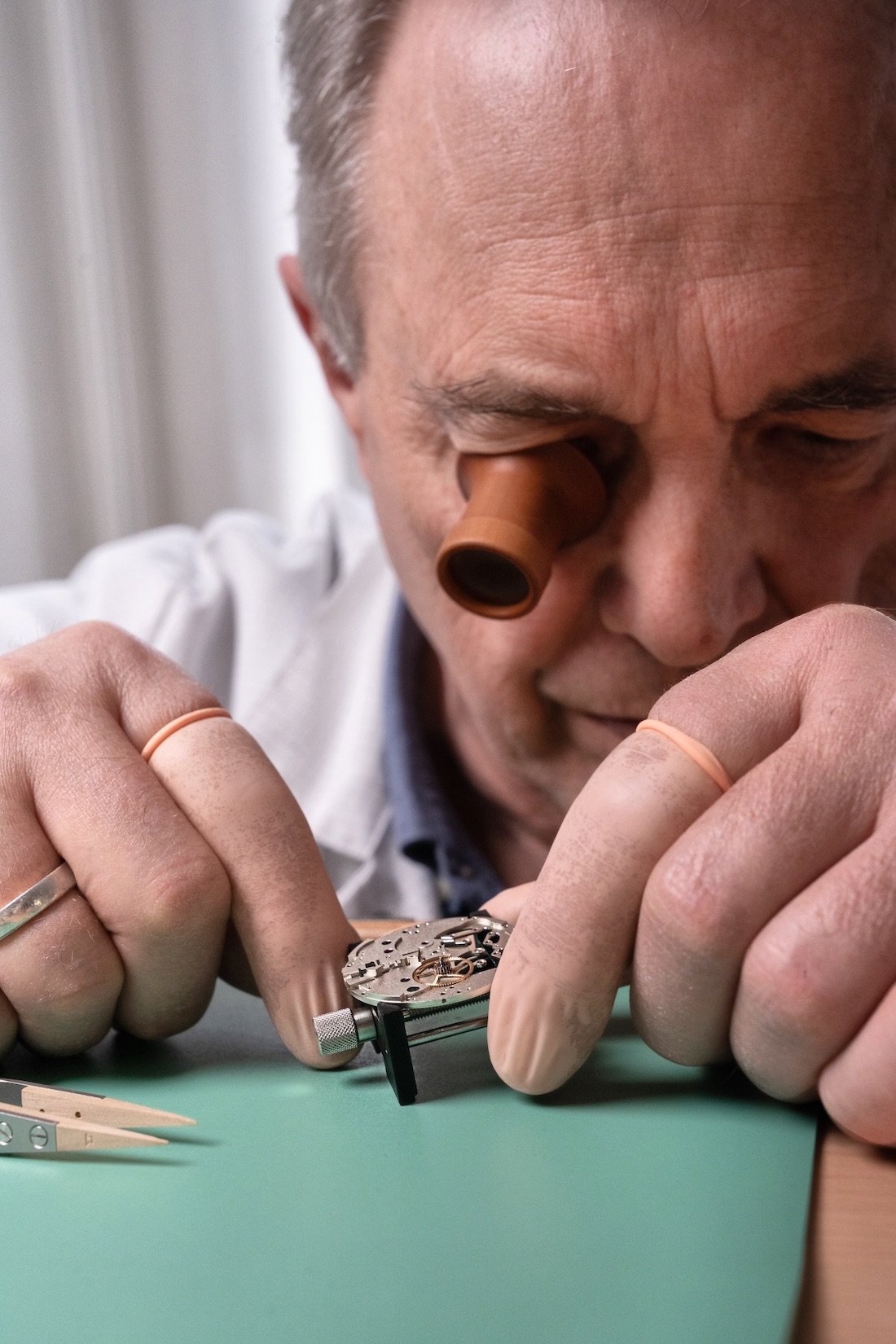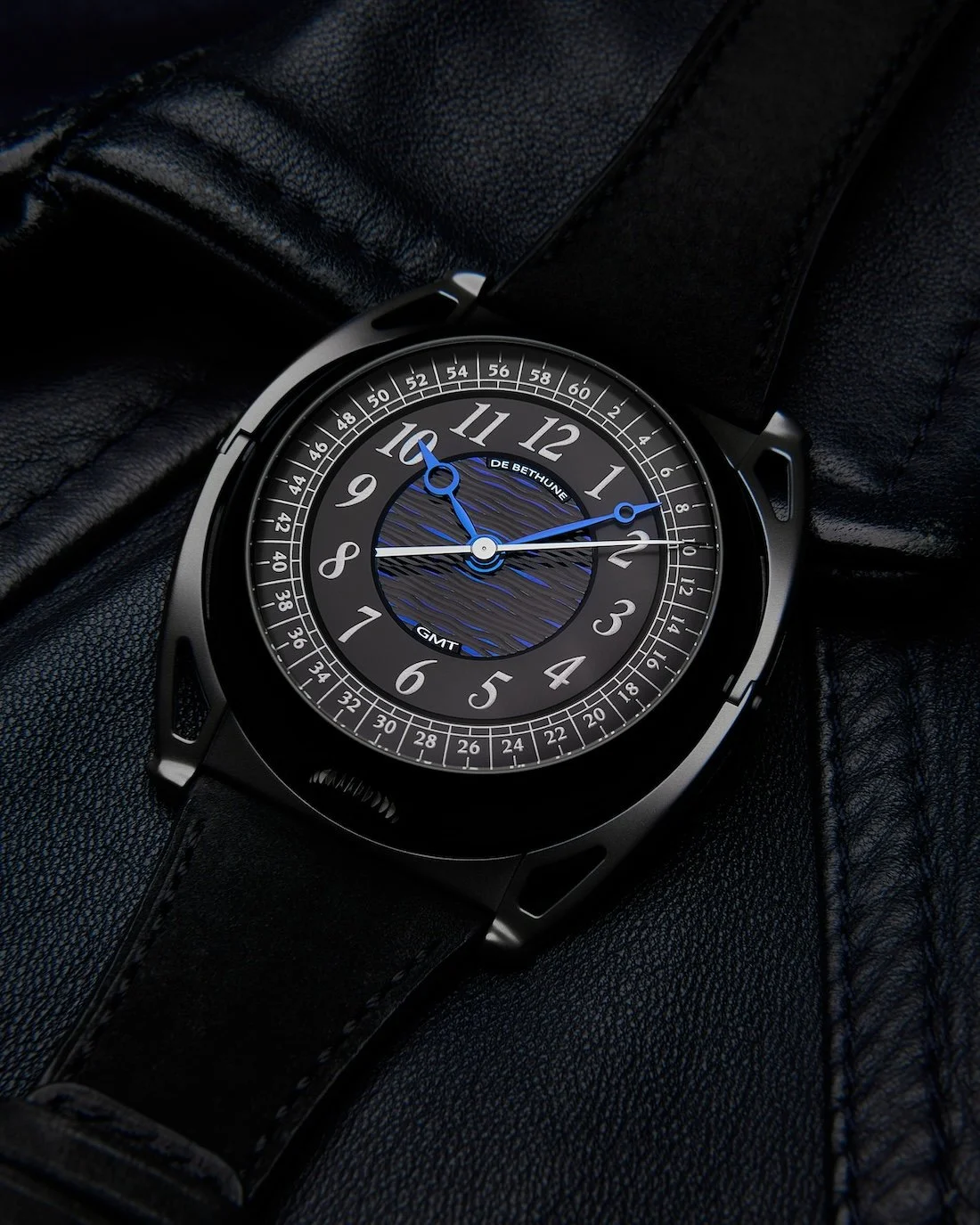After winning the prestigious Innovation Prize at the Grand Prix d'Horlogerie de Genève in 2021, Lederer's celebrated Central Impulse Chronometer is back in the spotlight. Today, the watch not only continues to impress with its avant-garde mechanism but also with its new, more sober aesthetic, presented in a 39 mm diameter case. Initially presented in a 44 mm case, this horological masterpiece embraces a new era with a smaller, more contemporary 39mm size. This evolution is not merely a matter of size; it marks a significant mechanical advance with the introduction of a new triggering system for the constant-force remontoirs, designed and developed in-house at Lederer's Saint-Blaise —Neuchâtel— workshop.
For Bernhard Lederer, the challenge was as much technical as it was aesthetic. Mastering the complexity of fitting all components perfectly within a smaller diameter ensuring they not only fit but also work seamlessly together.
Reducing the diameter from 44 mm to 39 mm was a delicate endeavor, necessitating a profound redesign of the movement. Beyond raising the bar for precision and ingenuity, this process also opened new realms of creative freedom, unlocking a space for expression with even more possibilities of refinement. Here, reducing was not merely a matter of shrinking; on the contrary, it involved pushing the boundaries further, thinking differently, developing, and finding solutions to deliver uncompromising aesthetics and exceptional exactness.
The new Lederer Central Impulse Chronometer 39 mm is available in 18K white gold with a blue galvanic treatment dial, and in 18K rose gold with a dial in shades of gray. The two models are limited to a series of 20 pieces each.
“When you alter the geometry of an escapement, there are significant technical implications and it triggers a domino effect. Developing the Central Impulse Chronometer in a 39 mm size was not merely about reducing the diameter; the movement’s height had to be brought down, too, to preserve the aesthetic balance. So this project went quite a ways beyond simple refinement or thinning out safety margins; that would have jeopardized the movement’s stability and reliability. In fact, every aspect and detail had to be meticulously assessed as to whether a redesign was warranted. Thanks to these very minute and very precise adjustments, we were able to reduce the movement’s thickness by more than 1mm, approximately 18% of its original size, which in itself is remarkable,” Bernhard Lederer explains.
The difference in diameter is immediately obvious; less so the real highlight: the new detent mechanism for activating the remontoirs. Developed entirely in-house, this redesign significantly enhances the watch’s reliability and performance. It represents a notable advancement beyond the previous system, which was governed by a Wankel disk on the seconds wheel. Although it was engineered to minimize interference, it was not immune to disruptions, however minimal they might be. In the new mechanism, activation occurs directly within the winder, reducing the force required to engage the system by a factor of 9. This innovative approach not only elevates quality, precision, and reliability to unprecedented levels, but also introduces a contemporary masterpiece that pays tribute to the great watchmaking tradition.
“As a result of this modification, the flow of force to the escapement is even smoother, ensuring exceptional precision and regularity throughout the power reserve,” explains Bernhard Lederer.
Inspired by Louis-Abraham Breguet’s pioneering work on the ‘natural escapement’ and George Daniels’s innovative ‘Independent Double Wheel Escapement’ design, Bernhard Lederer revisited the escapement from a modern perspective. The inherent limitations of these innovations —the natural escapement was too heavy to ensure reliable performance and the Independent Double Wheel Escapement, while powerful, was only applicable to pocket watches— led Bernhard Lederer to develop a new geometry, aimed at adapting the novel escapement for everyday use. To achieve this, Lederer installed two independent escape wheels at the end of two separate gear trains, each equipped with its 10-second constant-force remontoir. These wheels operate alternately, achieving a remarkable symmetry.
With a detent mechanism that is absolutely one of a kind —its profile, its rubies, its lift angle, its direct central impulse— and therefore theoretically perfect, the result is a truly extraordinary system. This design minimizes friction and ensures the balance wheel receives energy with optimal timing, enhancing isochronism and stability.
From the outset, a frequency of 3 Hz was chosen because a watch worn on the wrist has to contend with shocks that impact the movement's regulating components. These components must resume their operation as quickly as possible after each shock, a crucial requirement for ensuring optimal precision under wearing conditions. The two escapement wheels, operating independently of each other, are each linked to a seconds counter. While the two seconds hands are also independent of each other, they are permanently synchronized, showing no drift about each other until the end of the power reserve is reached.
This is made possible by an ingenious new mechanism that activates exclusively towards the end of the power reserve, bringing the entire watch to a halt. Thanks to this subtle system, which can recognize when the remontoir is no longer wound, the Central Impulse Chronometer 39mm is protected from a loss of precision that occurs as energy decreases at the end of the power reserve. This ensures the perfectly synchronized positioning of the two seconds hands from full to empty.
The round 39 mm case, in either 18K white or rose gold, is characterized by soft and elegant lines. Its slender polished bezel maximizes visibility into a dial designed as a true masterpiece of watchmaking art, reflecting a stunning three-dimensional approach both in its design and aesthetics. Far from a mere flat dial, it stands out for its volume and depth, mirroring the complex architecture and sophistication of the movement encased within. This perfect integration between dial and movement emphasizes the importance of visual and functional harmony in watch design.
An interesting aspect of this dial’s design lies in Manufacture Lederer's ability to also produce its dials, hands, and indices in-house, thus ensuring not only exceptional quality but also adherence to delivery schedules. The integrated manufacturing of these components, which are usually outsourced, reflects the brand’s commitment to uncompromising excellence and independence.
The open seconds counter at 11 o'clock, with its hand sweeping counterclockwise, bears the inscription ‘Dual Chronometer,’ highlighting the two mechanisms central to the Central Impulse Chronometer. Watch enthusiasts who appreciate the watch’s functional duality will appreciate this detail, which underscores the mechanism's complexity and superior performance. The other seconds counter, positioned at 8 o'clock, with its hand rotating clockwise, has been deliberately 'closed' to enhance overall readability and to avoid competing with the visual impact of the constant-force winding mechanism, a feature that further amplifies the precision and innovation at the core of this creation. The 'Lederer' signature, carefully inlaid in a cartouche at 5 o'clock, adds a further dimension of depth to this masterpiece. The letters, as if in bas-relief, reinforce the watch’s identity while underlining its exclusive character and attention to detail.
On the case back, a second sapphire crystal, domed and beveled —an element as challenging to craft as the watch's front crystal— provides an exceptional view of the movement’s architecture. Three-dimensional, symmetrical, oblique, and open-worked, this design offers a visual feast. The barrel, gear train, winding mechanism, escapement, and balance wheel bridges are all skeletonized, showcasing slender geometric shapes.
Sticker Price TBC. For more info on Lederer click here.



